This post may contain affiliate links. Please read our disclosure policy.
This small loaf French bread recipe gives you a crisp, golden crust and a soft, airy interior – just like bakery bread but in a perfect single loaf. It’s easy to make and great for smaller households. Whether you’re a seasoned baker or trying homemade bread for the first time, this recipe is simple, reliable, and easy to customize.

Featured Comment
“This recipe was easy and the bread turned out light and delicious. The exact right amount for 1 or 2 people. I will be keeping this one and making the bread often.”
– Starla
Why You’ll Love This Recipe
- Simple to Make: Easy to mix by hand or with a stand mixer.
- Perfectly Portioned: Makes just one small loaf, no excess bread to store.
- Customizable: Add olives, walnuts, roasted garlic, or fresh herbs.
I’ve been baking French bread for years, but scaling it down to a smaller loaf was a challenge worth taking on. Working with yeast can seem intimidating, especially when trying to get the dough to rise properly. This recipe is designed to be approachable and reliable, making homemade bread easy for anyone. To help, I’ve included step-by-step photos so you can follow along with confidence.
This bread is incredibly versatile! Enjoy it with our easy French onion soup, chili recipe for one, single serve red beans and rice, pot roast recipe for 1, small batch cheese fondue, or keep it simple with a spread of small batch homemade jam. However you serve it, this small loaf is always delicious.

Ingredients
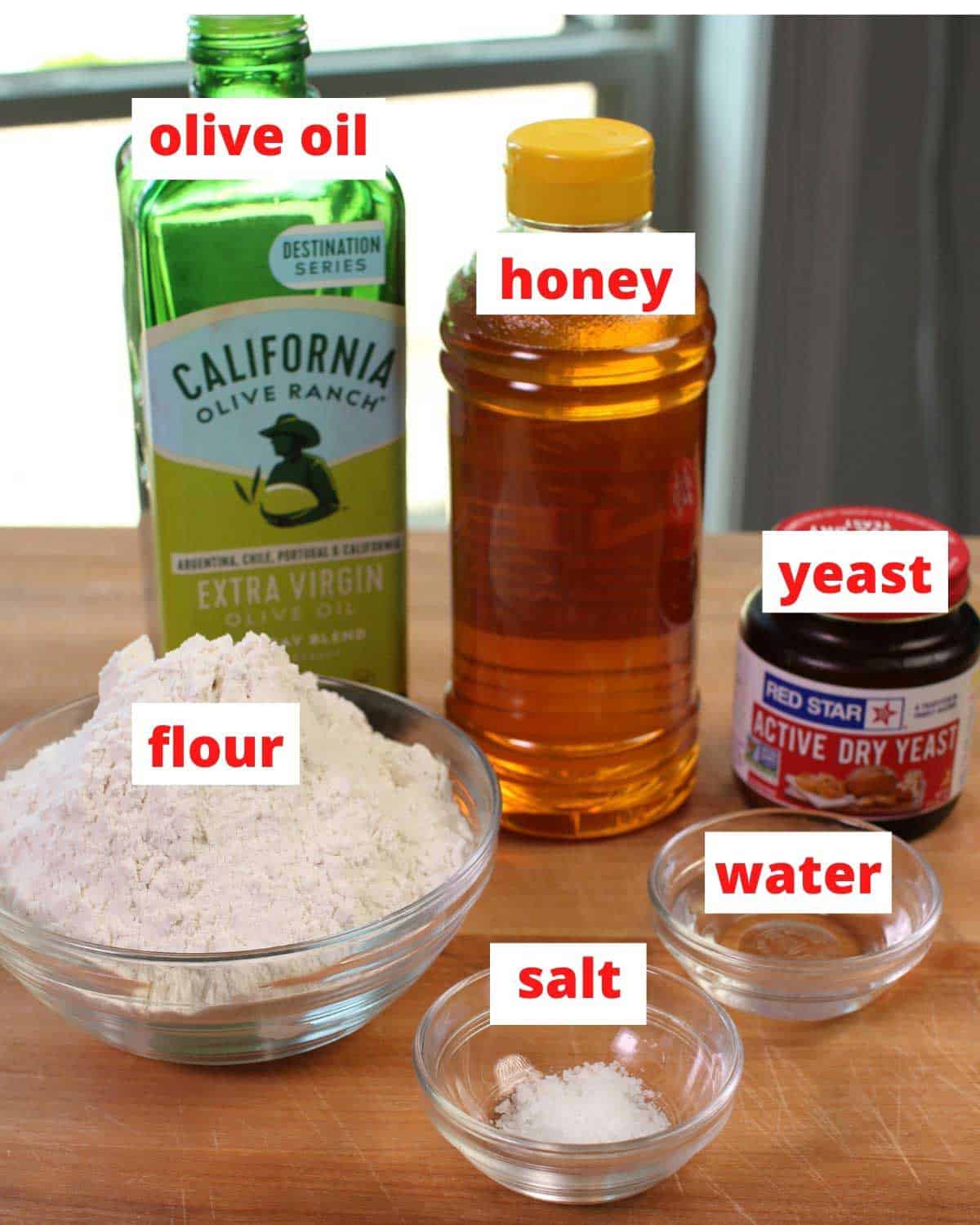
If you have any ingredients leftover from this small loaf bread recipe, check out our Leftover Ingredients Recipe Finder.
- Flour: You can use either all-purpose flour or bread flour in this recipe. All-purpose flour is versatile and works well, while bread flour’s higher protein content gives the dough more strength and results in a higher rise. Note that bread flour absorbs more liquid, which makes the dough slightly firmer.
- Water: Use warm water, between 90-100°F, to properly activate the yeast.
- Salt: Essential for flavor and to control the yeast. Without salt, the bread may rise too quickly and taste bland.
- Active Dry Yeast: This recipe calls for active dry yeast, which needs to be dissolved in water. Check that your yeast is fresh for the best results.
- Honey: Adds a subtle sweetness that enhances the bread’s flavor more effectively than granulated sugar.
- Olive Oil: Use extra virgin olive oil for its rich flavor and nutritional benefits. A lighter olive oil or vegetable oil can also work.
How To Make A Small Loaf Of French Bread
These step-by-step photos and instructions help you visualize how to make this small batch French bread recipe. See the recipe box below for ingredient amounts and full recipe instructions.
- Prepare the Dough
- Combine Ingredients: In a large mixing bowl, add flour, salt, honey, olive oil, and water. Sprinkle yeast over the water to dissolve. Mix using a stand mixer or by hand. If using a stand mixer, start with the paddle attachment until the dough begins to come together.
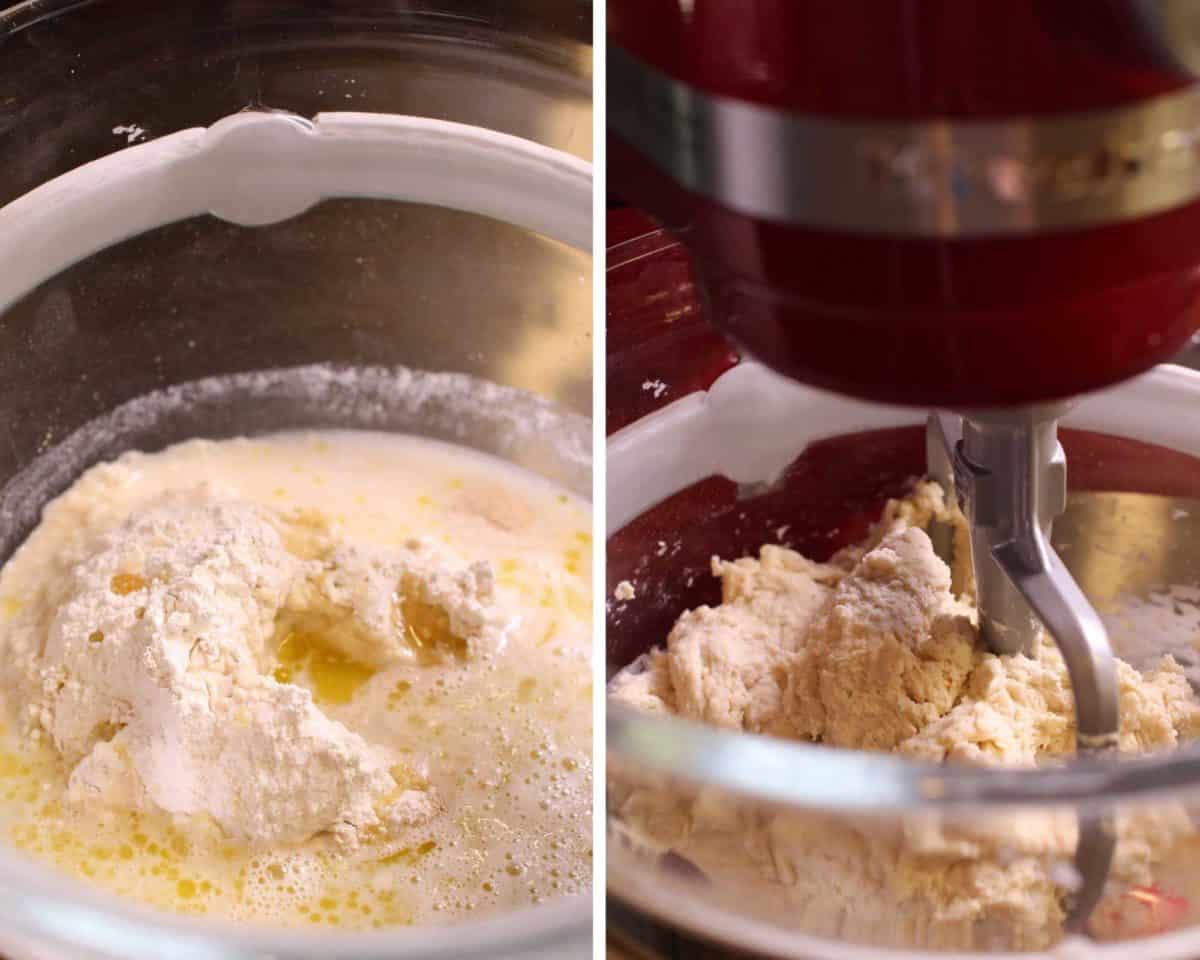
- Knead the Dough: Switch to the dough hook and knead for about 10 minutes, developing the gluten for elasticity. Avoid overmixing. To check readiness, perform the “windowpane test” by stretching a small piece of dough – if it forms a thin, translucent sheet without tearing, it’s ready. If it tears, knead a little longer.
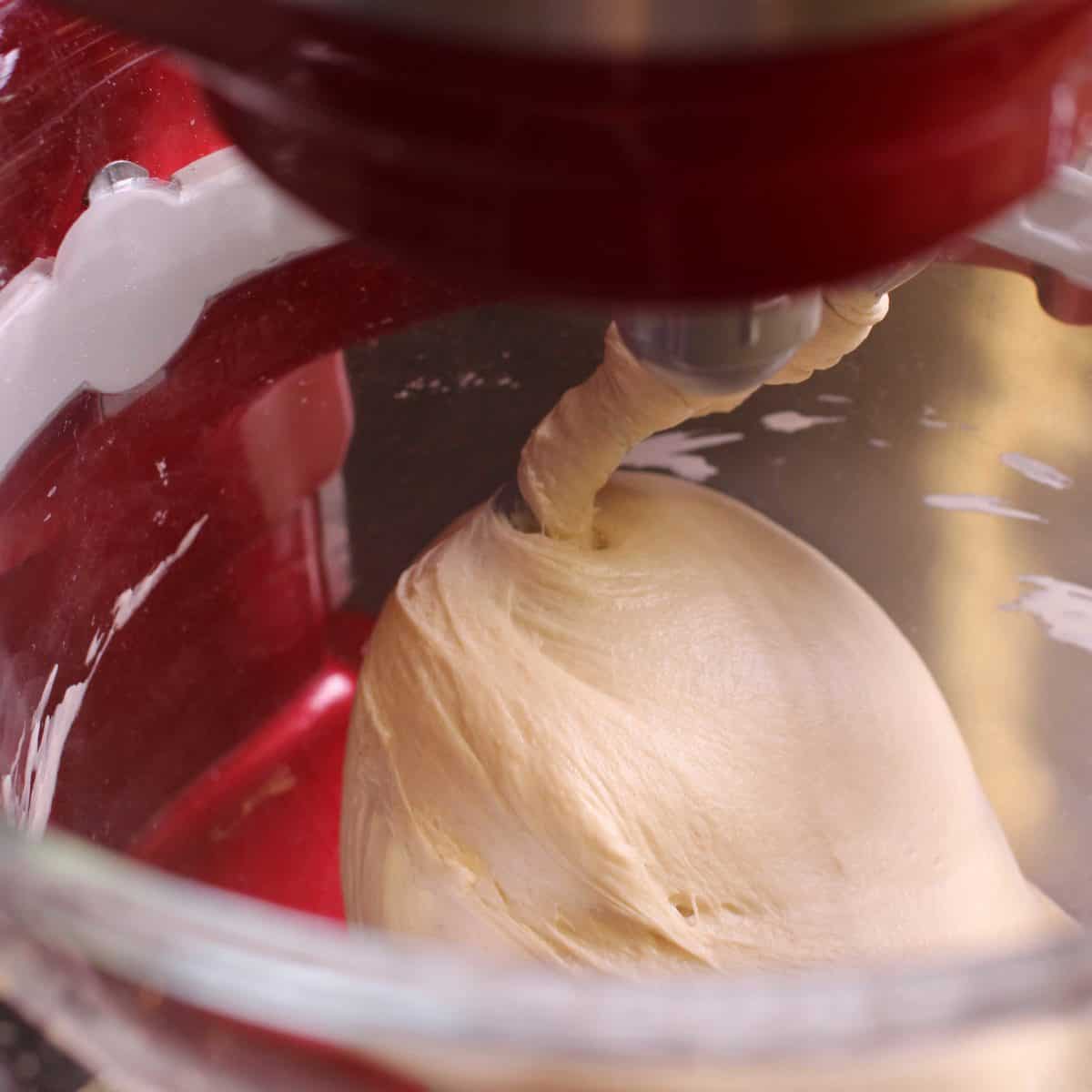
- First Rise
- Let the Dough Rise: Cover the bowl with plastic wrap and let the dough rise until it doubles in size, about 1 hour depending on room temperature. This step enhances flavor and texture.
- Check for Readiness: Lightly press a finger into the dough. If it resists slightly but doesn’t spring back, it’s ready. If it springs back, let it rise a bit longer.
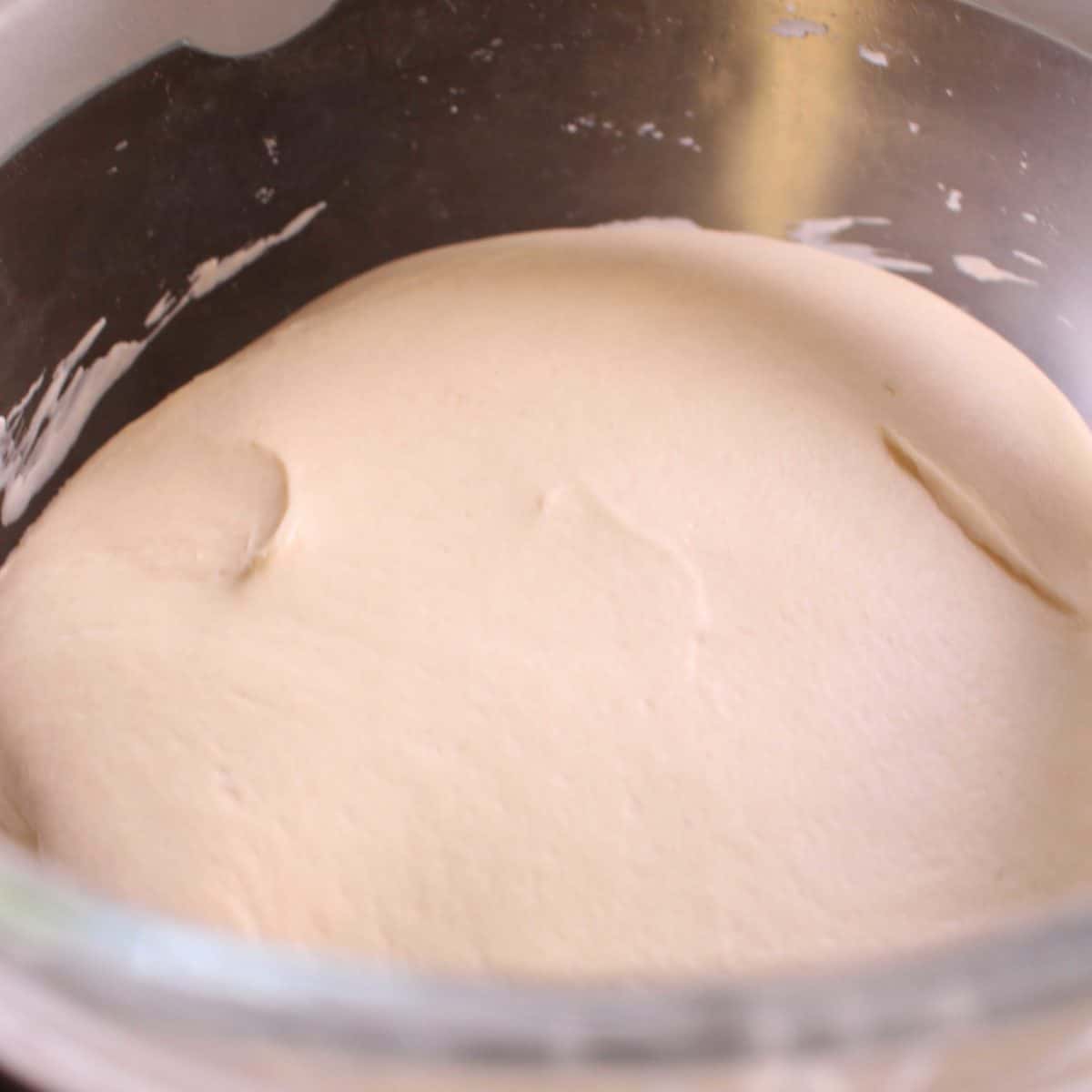
- Rest the Dough
- Knead and Rest: Turn the dough onto a lightly floured surface. Gently knead to release gas and redistribute the yeast. Cover with a dish towel and let it rest for 10-15 minutes.
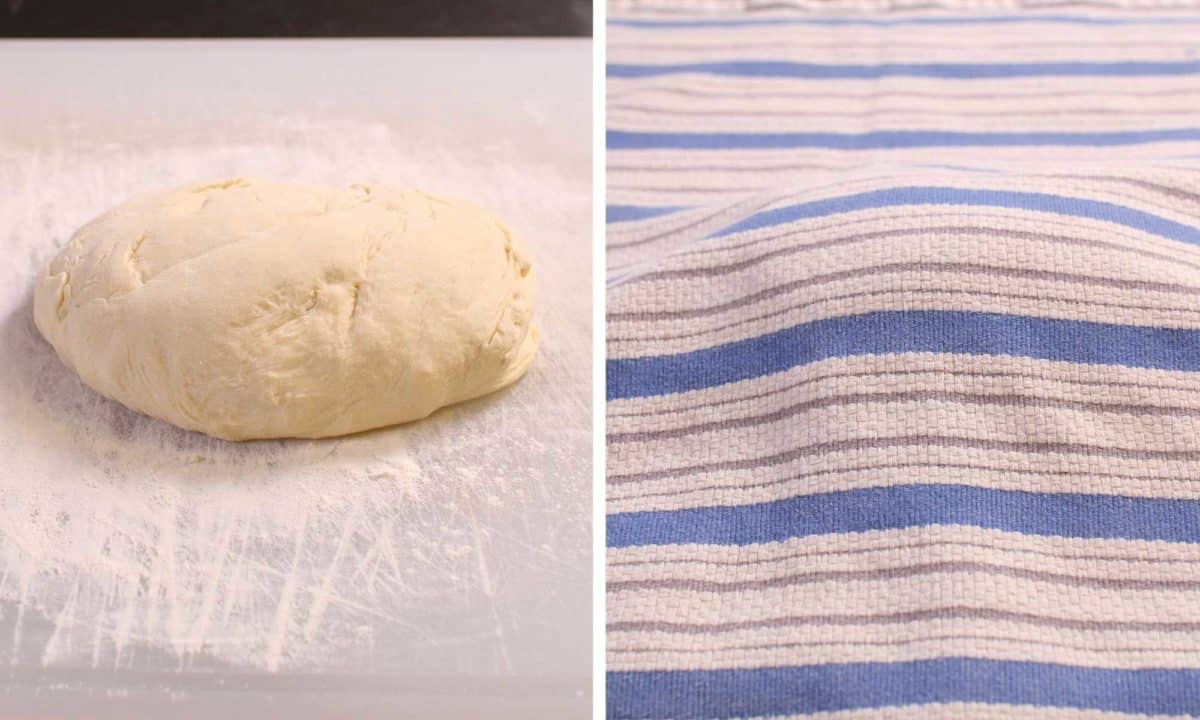
- Shape and Second Rise
- Shape the Dough: Shape into an oval or round loaf (boule). For a baguette, form a 6×3-inch rectangle. Place on a baking sheet, cover with a dish towel, and let it rise for about 1 hour.

- Bake the Bread
- Preheat and Score: Preheat the oven to 400°F (200°C). Use a sharp knife to make a slash across the top of the dough to control expansion during baking.
- Brush and Bake: Brush the top with olive oil and sprinkle with kosher salt. Bake for 18-20 minutes, or until the crust is golden brown.

This recipe is my favorite for making a quick, delicious small loaf – just the right size for smaller households!
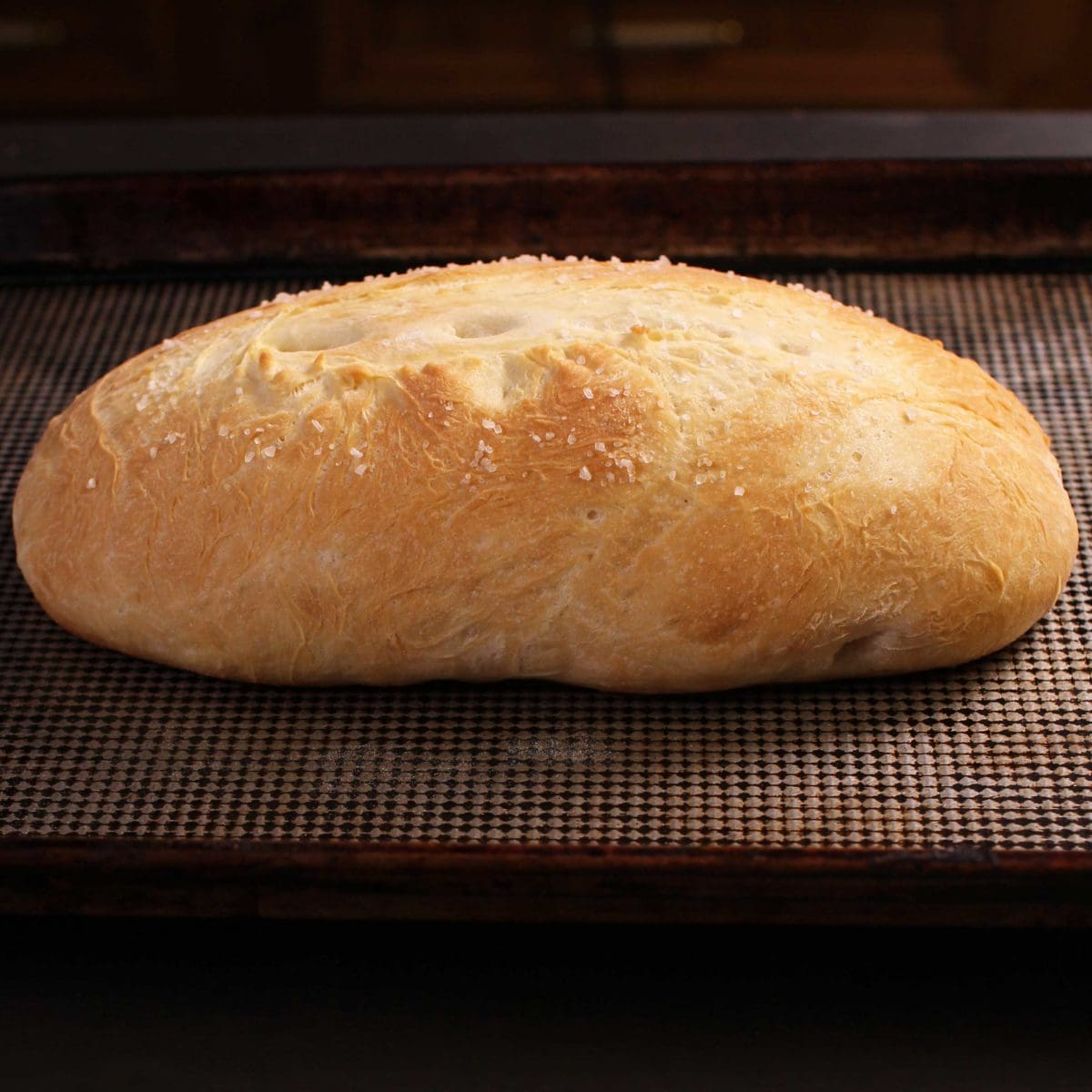
Expert Tips
- Using Yeast: This recipe uses active dry yeast, which needs to be dissolved in warm water. If using instant yeast, mix it directly with the other ingredients – no need to dissolve it first.
- Sticky Dough: If the dough feels sticky, sprinkle a little flour on your hands and the surface. Add more flour gradually, one tablespoon at a time, until the dough is smooth and elastic.
- Dough Not Rising: If the dough isn’t rising, check the yeast and water temperature – warm water (not hot or cold) is key. If the room is too cool, let the dough rise in a slightly warm oven. Preheat for 1 minute, turn it off, and place the dough inside, or leave the oven light on for gentle warmth.
- Doughy Bread: Bread that’s doughy in the middle may need more baking time or a slightly higher oven temperature. Tap the bottom of the loaf, it should sound hollow and feel light when fully baked.
- Measuring Flour: For best results, weigh the flour (10 ounces or 285 grams). If you don’t have a scale, fluff the flour, spoon it into a dry measuring cup, and level it off with a knife.

Bread Dough Variations
This basic bread dough is versatile and easy to customize with flavorful add-ins. Here are two ideas to elevate your loaf:
- Olive-Walnut Bread: Mix in 1/8 cup of chopped kalamata olives and 1/8 cup of chopped walnuts during the dough mixing process. The olives add a tangy flavor and vibrant color, while the walnuts provide a nutty crunch. After baking, brush the loaf with melted butter mixed with 1/4 teaspoon of garlic salt for added flavor.
- Rosemary and Roasted Garlic Bread: Add 3-4 roasted garlic cloves (whole or chopped) and 1/2 tablespoon of chopped rosemary to the dough just before shaping for the second rise. To roast garlic, cut the top off a garlic head, drizzle with 1 tablespoon of olive oil, wrap in foil, and roast at 400°F for 30-35 minutes until tender.
Delicious Ways To Enjoy Your French Bread
This crusty French bread is great on its own but also works in many recipes. Try it with:
Frequently Asked Questions
Yes! You can mix and knead the dough by hand. It will take about 15-20 minutes of kneading until the dough is smooth and elastic, but it’s completely doable.
Yes, you can use the same amount of instant yeast. There’s no need to dissolve it in water, just mix it directly with the dry ingredients.
If your dough isn’t rising, the yeast might be inactive, or the room may be too cold. Try placing the bowl in a slightly warm oven (preheated for 1 minute, then turned off) to help it along.
Store the bread in a resealable bag or wrapped in a kitchen towel at room temperature for up to 2 days. For longer storage, freeze it in an airtight bag for up to 3 months.
Yes, you can double the ingredients to make two loaves. Be sure to monitor the dough’s rising and kneading times, as they may vary slightly with the larger batch.
I haven’t tested this recipe in a bread machine, so adjustments may be needed. If you’d like to try, King Arthur Flour offers a helpful guide on adapting bread recipes for bread machines.
For this French bread recipe, I use a KitchenAid 6-quart stand mixer.
Ways To Use Leftover Ingredients
If you have any ingredients leftover from this recipe, check out our Leftover Ingredients Recipe Finder or you might like to consider using them in any of these single serving and small batch recipes:
If you’ve tried this small loaf French bread recipe or any recipe on One Dish Kitchen please let me know how you liked it by rating the recipe and telling me about it in the comment section below.
Also, if you take a picture please tag us on Instagram (@onedishkitchen) we’d love to see it!
Small Loaf French Bread
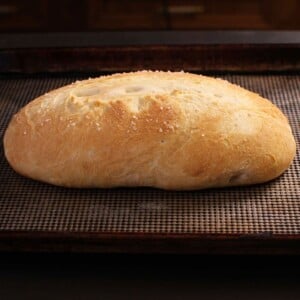
Watch How To Make This
Equipment
Ingredients
- 10 ounces all purpose flour or bread flour – (2 ¼ cups for a single loaf. If doubling the recipe, use 4 ½ cups)
- 1 teaspoon kosher salt -plus ½ teaspoon for sprinkling on top
- 1 tablespoon honey
- ½ tablespoon olive oil – plus 1 tablespoon for brushing over top.
- 6 fluid ounces warm water
- ½ teaspoon active dry yeast
Instructions
- Mix the Ingredients: In a large mixing bowl, combine flour, salt, honey, olive oil, and water. Sprinkle the yeast over the water to dissolve.
- Knead the Dough: If using a stand mixer, start with the paddle attachment and mix on medium speed until the dough begins to come together. Switch to the dough hook and knead on medium speed for about 10 minutes, until the dough is smooth and elastic.If kneading by hand, knead on a floured surface until the dough is smooth and stretchy.
- First Rise: Cover the bowl with plastic wrap and let the dough rise in a warm spot for about 1 hour, or until it doubles in size.
- Deflate and Rest: Turn the dough onto a floured surface and knead gently 4-5 times to release air and redistribute the yeast. Cover with a dish towel and let it rest for 10-15 minutes.
- Shape the Dough: Form the dough into a round boule, an oval, or a 6×3-inch rectangle for a baguette. For a baguette, seal the ends by pressing them down with the heel of your hand. Place the shaped dough on a baking sheet, cover with a dish towel, and let it rise for 1 hour.
- Preheat and Prepare: Preheat the oven to 400°F (200°C). Before baking, make a slash across the top of the loaf with a sharp knife. Brush with 1 tablespoon of olive oil and sprinkle ½ teaspoon of kosher salt on top.
- Bake: Bake for 18-20 minutes, or until the bread is golden brown.
- Serve: Slice and enjoy your freshly baked bread!
Notes
- Using Yeast: This recipe uses active dry yeast, which needs to be dissolved in warm water. If using instant yeast, mix it directly with the other ingredients—no need to dissolve it first.
- Sticky Dough: If the dough feels sticky, sprinkle a little flour on your hands and the surface. Add more flour gradually, one tablespoon at a time, until the dough is smooth and elastic.
- Dough Not Rising: If the dough isn’t rising, check the yeast and water temperature—warm water (not hot or cold) is key. If the room is too cool, let the dough rise in a slightly warm oven. Preheat for 1 minute, turn it off, and place the dough inside, or leave the oven light on for gentle warmth.
- Doughy Bread: Bread that’s doughy in the middle may need more baking time or a slightly higher oven temperature. Tap the bottom of the loaf—it should sound hollow and feel light when fully baked.
- Measuring Flour: For best results, weigh the flour (10 ounces or 285 grams). If you don’t have a scale, fluff the flour, spoon it into a dry measuring cup, and level it off with a knife.
- Combine Ingredients: In a large mixing bowl, stir the ingredients together with a spoon until combined.
- Transfer the Dough: Place the rough dough onto a lightly floured surface, like a counter or cutting board, and shape it into a ball.
- Start Kneading: Use the heel of your hand to gently push the dough away from you.
- Fold and Press: Lift the far edge of the dough, fold it toward you, and press down firmly.
- Add Flour as Needed: Sprinkle a little flour if the dough gets sticky, and continue folding and pressing for about 3 minutes until the dough begins to smooth out.
- Keep Kneading: Continue kneading for 15-20 minutes until the dough is smooth and elastic.
Nutrition
The information shown is an estimate provided by an online nutrition calculator. It should not be considered a substitute for a professional nutritionist’s advice.
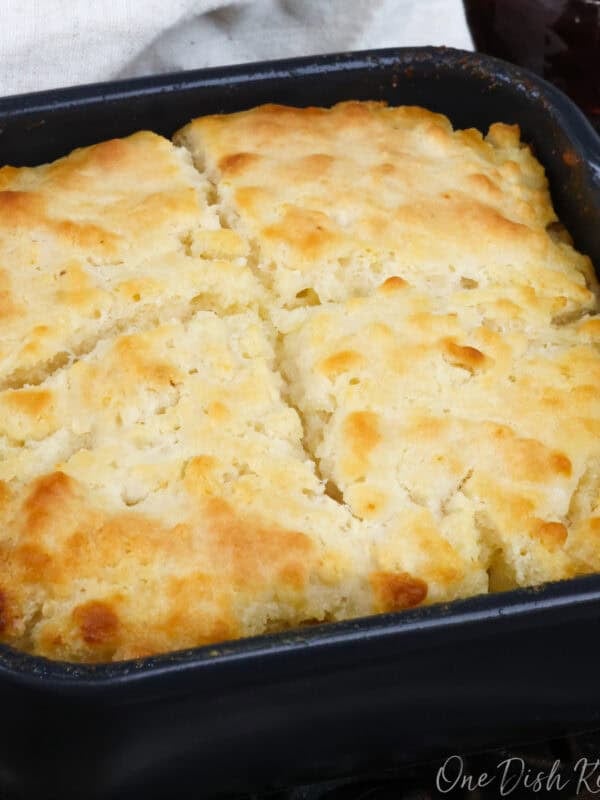
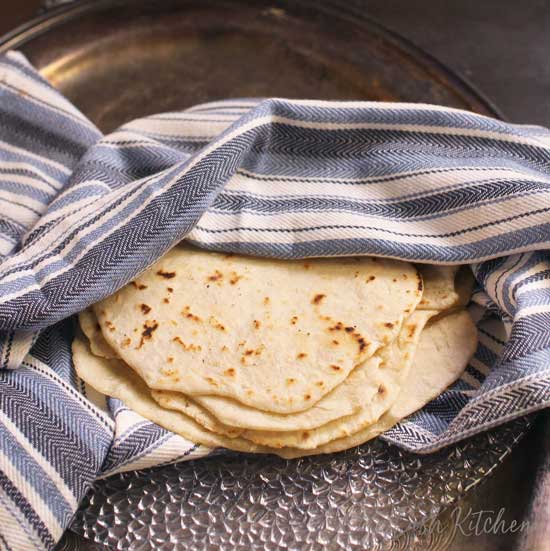

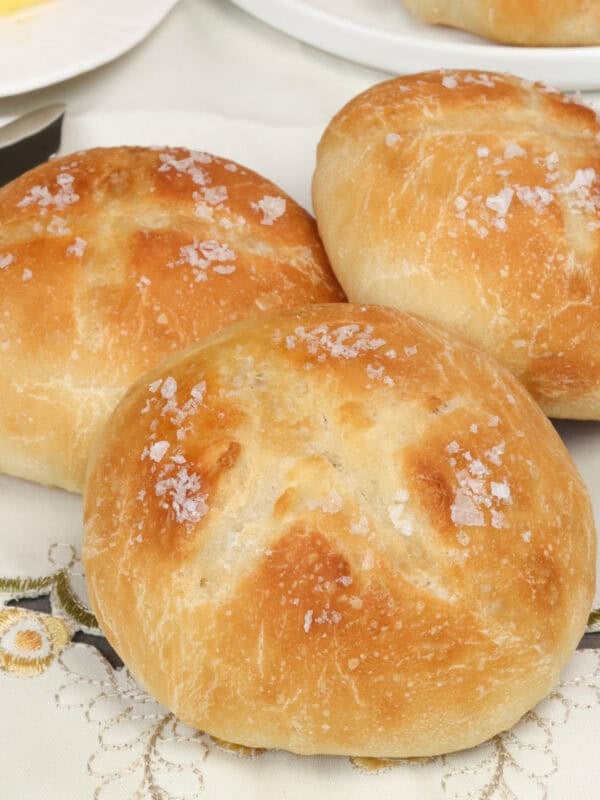


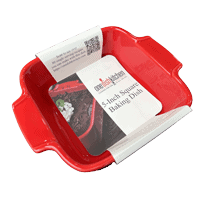








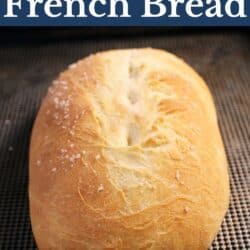
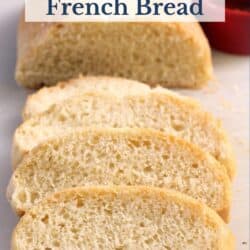
Thank you for this recipe! I had decided to make French bread loaves to give to the neighbors with some homemade blueberry jam. This recipe is perfect! Happy holidays
Easy and delicious to go with our traditional Sunday night pasta and homemade sauce—a few leftover slices were yummy toasted in the morning
Came out absolutely perfect! Enjoyed while watching season finale of British Baking Show
That sounds like a wonderful way to enjoy it! I’m so glad the French bread turned out perfectly.
I am excited to try your recipe and it sure sounds like it would be versatile. I would like to add-in some family favorites…like CHEESE, garlic, Rosemary, etc. What qualities would you suggest on each of the add-ins?
We love all Italian and soups/stews!
That’s a great question — and those sound like delicious additions! Since this is a small loaf, you’ll want to keep the mix-ins light so they don’t weigh down the dough. Here’s what I’d suggest:
Cheese: Add about 2 to 3 tablespoons of shredded cheese such as Parmesan, mozzarella, or cheddar. Mix it in during kneading or sprinkle it over the top before baking.
Garlic: Add 1 small clove of minced garlic or 2–3 roasted cloves for a milder flavor. You could also brush the baked loaf with a little melted butter mixed with garlic powder or minced garlic.
Rosemary: Use about ½ tablespoon of fresh rosemary (or 1 teaspoon dried) added in during mixing or kneading.
These all pair wonderfully with soups, stews, and Italian dishes. You might also like to take a look at the Bread Dough Variations section in the post — there are more flavor ideas there that you may enjoy trying!
Looks Wonderful. How can I make in bread machine?
I haven’t tested this recipe in a bread machine, so adjustments may be needed. If you’d like to try, King Arthur Flour offers a helpful guide on adapting bread recipes for bread machines – https://www.kingarthurbaking.com/blog/2018/04/30/how-to-convert-recipes-to-a-bread-machine
Can this be made in a bread machine? If so, instructions please.
I haven’t tested this recipe in a bread machine, so adjustments may be needed. If you’d like to try, King Arthur Flour offers a helpful guide on adapting bread recipes for bread machines – https://www.kingarthurbaking.com/blog/2018/04/30/how-to-convert-recipes-to-a-bread-machine
OMG, thank you for sharing this. I finally decided to search for a recipe that makes a smaller loaf of bread and this recipe nailed it. It was extremely easy to make with my stand mixer, the easiest to make in the years I’ve been trying. It is saved in my favorites.
I’m so glad you found this recipe and that it worked out so well for you! It’s wonderful to hear that it was easy to make and earned a spot in your favorites.
So good! Didn’t put in enough honey so threw in a little sugar. Didn’t add as much salt, but added dried roasted garlic. Soooo good! Thank you for sharing your recipe!
I’m so glad you enjoyed it! The dried roasted garlic sounds like a wonderful addition — I’ll have to try that next time.